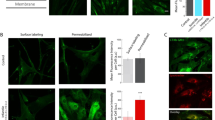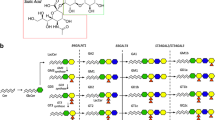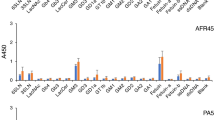Abstract
THE glycolipids of organs outside the central nervous system have been subject to sporadic investigations only. For many years it has been well known that in Gaucher's disease there is a strong accumulation of cerebrosides in spleen. These are glucocerebrosides and not galacto-cerebrosides, the normal constituents of normal brain1. More complex glycosphingosides—ceramide-dihexosides and aminoglycolipids—have been isolated from spleen and red blood cells2–7. With modern chromatographic methods an investigation of the whole glycolipid profile of red blood cell stroma and spleen in different mammals is carried out by Yamakawa and collaborators8,9. Independently of the Japanese group we are investigating the glycosphingolipid profile of human blood serum liver and spleen.
This is a preview of subscription content, access via your institution
Access options
Subscribe to this journal
Receive 51 print issues and online access
$199.00 per year
only $3.90 per issue
Buy this article
- Purchase on Springer Link
- Instant access to full article PDF
Prices may be subject to local taxes which are calculated during checkout
Similar content being viewed by others
References
Fredricksson, D. S., and Hofman, A. F., in The Metabolic Basis of Inherited Diseases, edit. by Stanbury, J. B., Wyngarden, J. B., and Fredricksson, D. S., 603 (McGraw-Hill, Inc., New York, 1960).
Klenk, E., and Rennkamp, F., Z. Physiol. Chem., 273, 253 (1942).
Klenk, E., and Lauenstein, K., Z. Physiol. Chem., 288, 220 (1951); 291, 249 (1952).
Yamakawa, T., and Suzuki, S., J. Biochem. (Tokyo), 38, 199 (1951); 39, 393 (1952); 40, 7 (1953).
Yamakawa, T., and Iida, T., Japan. J. Exp. Med., 23, 327 (1953).
Papirmeister, B., and Mallette, M. F., Arch. Biochem. Biophys., 57, 94 (1955).
Rapport, M. M., Graf, L., and Alonzo, N. F., J. Lipid Res., 1, 301 (1960). Rapport, M. M., Schneider, H., and Graf, L., J. Biol. Chem., 237, 1056 (1962).
Yamakawa, T., Irie, R., and Iwanaga, M., J. Biochem. (Tokyo), 48, 490 (1960).
Makita, A., and Yamakawa, T., J. Biochem. (Tokyo), 51, 124 (1962).
Svennerholm, E., and Svennerholm, L., Acta Chem. Scand., 16, 1282 (1962).
Svennerholm, L., and Thorin, H., J. Lipid Res., 3, 483 (1962).
Svennerholm, E., and Svennerholm, L., Biochim. Biophys. Acta (submitted for publication).
Rapport, M. M., Skipski, V. P., and Sweeley, C. C., J. Lipid Res., 2, 148 (1961).
Radin, N. S., and Akahori, Y., Fed. Proc., 20, 269 (1961).
Stoffyn, P. J., and Jeanloz, R. W., Arch. Biochem. Biophys., 52, 373 (1954).
Wagner, H., Hörhammer, L., and Wolff, P., Biochem. Z., 334, 175 (1961).
Author information
Authors and Affiliations
Rights and permissions
About this article
Cite this article
SVENNERHOLM, E., SVENNERHOLM, L. Neutral Glycolipids of Human Blood Serum, Spleen and Liver. Nature 198, 688–689 (1963). https://doi.org/10.1038/198688b0
Issue Date:
DOI: https://doi.org/10.1038/198688b0
This article is cited by
-
Immunohistochemical localization fo galactocerebroside in kidney, liver, and lung of golden hamster
Experientia (1981)
-
Isolation and partial characterization of the neutral glycosphingolipids and gangliosides of the human heart
Lipids (1979)
-
Glycosphingolipids of human thyroid
Lipids (1974)
-
Lipoidchemische Untersuchungen beim Angiokeratoma corporis diffusum (Fabry-Syndrom)
Klinische Wochenschrift (1969)
Comments
By submitting a comment you agree to abide by our Terms and Community Guidelines. If you find something abusive or that does not comply with our terms or guidelines please flag it as inappropriate.



